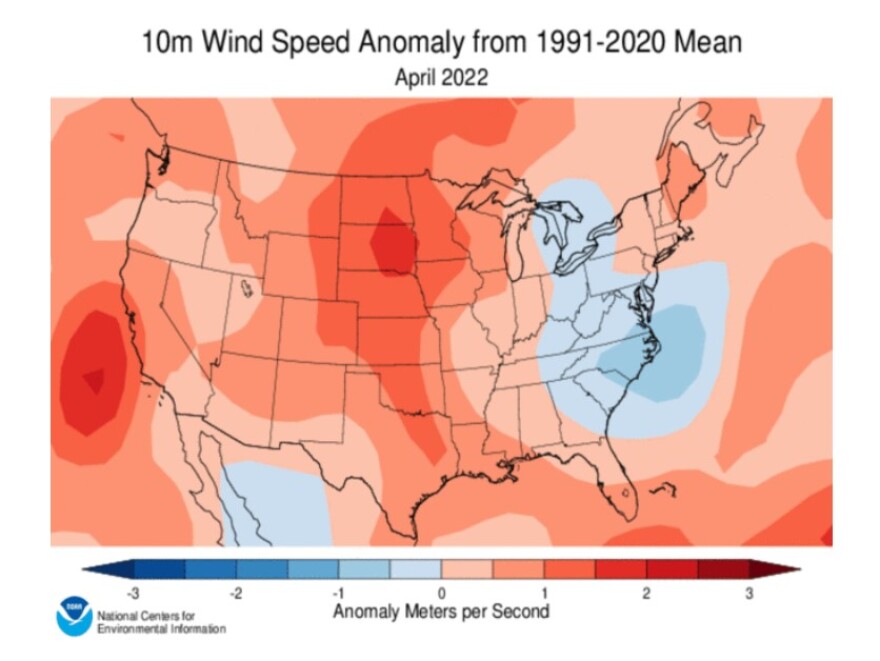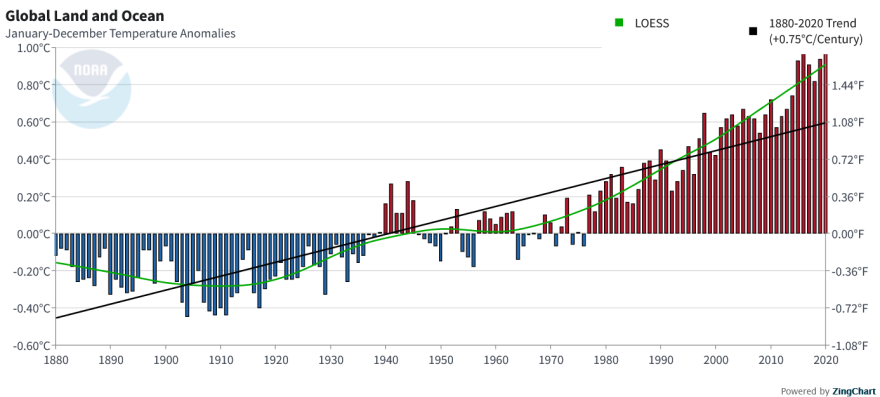A new study from Kansas State University researchers is the first to measure how a changing climate is hurting wheat production in the Great Plains. And it points to a future with more extreme heat, drought and wind.
HAYS, Kansas — It’s been a rough year for the Wheat State’s trademark crop.
This resilient plant is a fighter. But even for a grain that’s seemingly built to succeed on these unforgiving plains, the ongoing drought tests its limits.
Wheat farmers, like Chris Tanner in northwest Kansas, feel the roller coaster.
“It can be very, very bountiful or it can be the complete polar opposite and be a famine,” Tanner said. “You have to learn how to weather those storms in life.”
Recently, those storms have been closer to a Dust Bowl than a deluge.
After the rain shut off last spring, most of his wheat fields in northern Norton County ended up producing fewer than 20 bushels per acre, a steep drop from his average yields. Many of them didn’t grow enough to bother harvesting at all.
“That was basically a complete loss,” Tanner said. “It’s devastating to watch your crop die.”

It’s been a historically hot, dry, windy year across western Kansas. As incessant drought, sweltering heat waves and relentless winds have pummeled the region’s fields, gaining a better understanding of extreme weather’s impact on wheat has become increasingly critical for farmers and the state’s multibillion-dollar agricultural economy.
As the country’s top wheat-producing state — growing roughly one-fifth of all the wheat in the U.S. — the pain wheat farmers feel here sends ripple effects across the globe.
And a new piece of research — a collaboration between Kansas State University and other institutions from Texas to China — sheds more light on exactly what these brutal conditions can do to wheat crops and why extreme weather patterns might become more and more common here in the coming decades.
Triple whammy
The landmark K-State study bills itself as the first one to compute the impact of a changing climate on wheat farming in the Great Plains. It analyzed how different combinations of weather add up to affect the grain’s production across six states — Kansas, Colorado, Nebraska, South Dakota, Oklahoma and Texas.
The goal was to answer some simple questions with four decades of detailed data. What happens to wheat when the weather is hot? Or dry? Or windy? And what about when two or three of those atmospheric conditions hit the same field at the same time?
Unsurprisingly, the triple whammy of hot, dry and windy weather — known as HDW events — inflicted the most damage on harvests.
K-State agronomy professor Stephen Welch ran the study’s theoretical modeling that showed how various climate conditions impact plant growth. The compound impact of those three extremes happening together, he said, is significantly greater than when they occur one at a time. And in the Great Plains, those HDW events are ramping up.
“That precise combination of events has been increasing over the 40-year period due to climate change,” Welch said. “That’s a key factor.”

Here’s what the study found:
- For every 10-hour period that a wheat field experiences a hot, dry, windy event, the amount of grain it eventually produces goes down by 4%. That’s specifically tied to when HDW events happen during the critical latter stages of the plant’s growth. In Kansas, wheat generally hits that time of flowering and ripening during the spring.Unfortunately, that’s also the time when Kansas winds tend to whip the fiercest. On average, April is the windiest month of the year in Kansas. And the gusts blew especially hard last year. Goodland and Salina experienced their windiest April on record.

- The number of HDW weather events significantly increased during the study’s data period from 1982-2022 as greenhouse gas emissions warmed the climate. And the places that saw the sharpest rise in the frequency and severity of these events were the same ones that endured the Dust Bowl nearly a century ago, including western Kansas. The southern High Plains is already the windiest region in the inland U.S. and one of the driest regions east of the Rockies based on historical averages. So it makes sense that small, incremental changes in climate would be felt acutely here.Kansas State University professor and state climatologist Xiaomao Lin, who led the research team, said the study expects these HDW events to become even more frequent, intense and persistent as climate change continues over the next 25 to 75 years.“In terms of a projection,” Lin said, “we can see that increase will continue … especially without any mitigating of greenhouse gas emissions.”Another new report, from the American Meteorological Society, corroborates those findings. It shows how warming global temperatures have driven an increase in extreme droughts around the world in recent years and made previously unprecedented heat waves more commonplace.

- The increase in HDW events in the Great Plains shares a strong connection to what’s happening in the Pacific Ocean. The study established a link between instances of hot, dry, windy weather here and the cycles of the Pacific Decadal Oscillation, which the National Oceanic and Atmospheric Administration describes as a “long-lived El Niño-like pattern” of shifts in the Pacific Ocean’s temperature.Beginning to understand that connection, Lin said, could help predict the risks wheat crops face over the long-term future as those Pacific temperatures ebb and flow.

The best chance
The study’s findings, Lin said, increase the pressure to develop new wheat seed varieties that can better withstand this specific combination of hot, dry and windy conditions. And to deliver tools that help farmers know when to expect HDW events and what to do when their field gets hit with one.
“We cannot do too much (about the weather),” Lin said, “but we have to inform the farmers.”
For now, Kansas wheat growers have to hope the seeds they planted last fall can hang on to see the drought break by spring.
Tanner, the northwest Kansas farmer, harvested just enough wheat last year to get by financially and make it to another season. But when that next season came, the conditions didn’t get any better.

Drought has only tightened its grip across western Kansas, and the soil has virtually no moisture left. Tanner ended up planting most of his wheat seed into fields that were still covered with dead plants from last fall’s failed corn and soybean crops. At the very least, those scraggly leftovers could help keep the dirt from blowing away.
About a third of the wheat he planted hasn’t sprouted at all yet. Just seeds sitting in the parched earth. But as his fields inch one day closer to eventual rains, he’s optimistic that those late bloomers may be the lucky ones.
“Frankly, that might wind up being our best chance for production,” Tanner said, “because it hasn’t had a chance to die yet.”
David Condos covers western Kansas for High Plains Public Radio and the Kansas News Service. You can follow him on Twitter@davidcondos.
The Kansas News Service is a collaboration of KCUR, Kansas Public Radio, KMUW and High Plains Public Radio focused on health, the social determinants of health and their connection to public policy.
Kansas News Service stories and photos may be republished by news media at no cost with proper attribution and a link to ksnewsservice.org.
Don’t miss a beat … Click here to sign up for our email newsletters
Click here to learn more about our newsletters first








